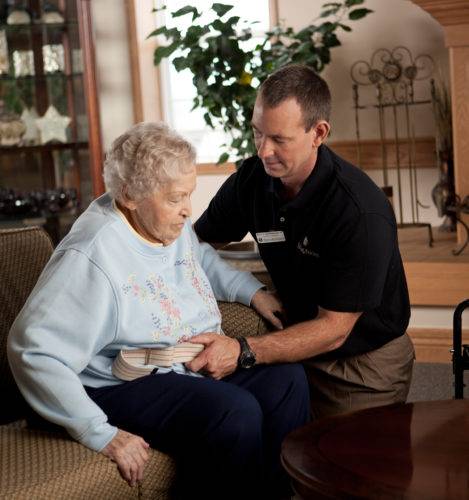Therapists Noticing Changes in Patient-Care Delivery
According to a September article in Modern Healthcare, occupancy at skilled nursing facilities across the United States reached a record low of 81.7 percent in the second quarter of 2018, down from 83.1 percent in the second quarter of last year. It stated the Affordable Care Act has steered consumers away from hospitals, SNFs and other inpatient settings by rewarding new care models that facilitate primary and home healthcare.
Interested in if our therapists were seeing a similar downslide, we talked to both Mary Ireland, PT, team lead at Spurgeon Manor, a skilled nursing facility in Dallas Center, Iowa (28 miles from Des Moines) and Courtney Hulett, PT, rehab director at Lake Regional Health Center in Osage Beach, Missouri.
Mary said in the last year to 18 months, her team has seen a huge shift in the type of patients on their caseload. She said they are treating patients who are a lot more medically complex and older—in their mid-80s to mid-90s.
With these patients, there are additional responsibilities on the therapists. “We’re taking vitals, working around IV meds, checking oxygen levels. It’s kind of an acute situation,” she said.
Mary said they are not treating many straight orthopedic cases. “They are going to home health or nothing at all,” she said. One patient was told to wait three days and then go to outpatient. “Five years ago, I would have seen her at a skilled facility.”
Mary also said it is now unusual for them to have patients for longer than 20 days. Insurance providers and physicians’ expectations have changed as well. “Where we used to work to get our patients to ‘prior level’, now it’s to where they can transition to the next level of care,” she said.

Changes in healthcare reimbursement are putting a greater emphasis on home health.
Our team at Lake Regional Health Center is also seeing the effects of these new initiatives but more on the home health side. Their first-quarter home health visits were 71 percent higher than last year.
Courtney said that with the push to get people in and out of the hospitals as quickly as possible, the therapy department has a more crucial role in the process. “We are encouraging ‘pre-hab’ and more upfront education for patients and families,” he said.
On the skilled side, Mary mentioned that there is a tremendous amount of pressure on families now that their loved ones are going home sooner and with less mobility than before. She said therapists need to work collaboratively with the interdisciplinary team to educate families and caregivers on the needs of patients to facilitate a safe transition home.
Courtney’s team has been doing a joint camp for years that helps families and patients understand what a typical recovery is like after a joint replacement. “We also encourage a couple of PT sessions prior to surgery.”
Mary and Courtney’s teams represent some of RehabVisions’ bigger markets. As these changes in healthcare filter to our rural areas, we all need to prepare for a shift in volumes in our current venues and perhaps a different-looking caseload.